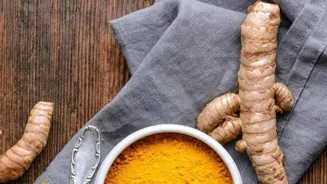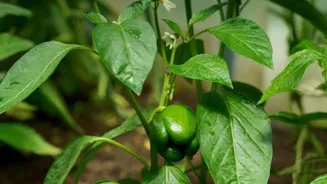Discover the magic of growing your own kitchen herbs! From coriander to tulsi, explore 6 essential herbs for your garden
Growing your own herbs is becoming quite the rage these days, innit? Not only does
it give you the freshest possible ingredients for your cooking, but it also adds a touch of green to your balcony or backyard. Forget about those wilted, sad-looking packets from the supermarket!
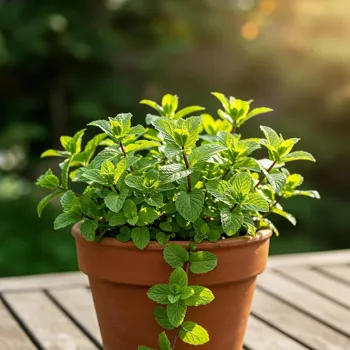
Imagine plucking fragrant, flavorful leaves just moments before adding them to your dal or chai. Here are six essential herbs that every Indian kitchen garden should have – they're easy to grow, versatile in the kitchen, and guaranteed to elevate your cooking game.
Plus, it saves you a trip to the bazaar every time you need a sprig of dhaniya!
Coriander/Dhania (Coriandrum sativum): The King of Garnishes
Dhania, or coriander, is practically the lifeline of Indian cuisine. From garnishing your favorite sabzi to adding freshness to chutneys, this herb is a must-have. It’s surprisingly easy to grow, even for beginners.
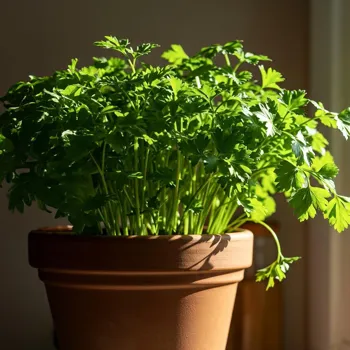
Simply soak coriander seeds overnight, then crush them lightly before sowing them in well-drained soil. Keep the soil moist, and you’ll see the seedlings sprout in no time. Remember to harvest regularly to encourage more growth.
Besides the leaves, the coriander seeds are also used in spices and the roots can be used to make yummy broths. Growing your own means having a constant supply of fresh, fragrant dhaniya at your fingertips. It elevates the taste of any dish and provides a burst of freshness.
It enhances the flavor of every cuisine. So, why rely on expensive store-bought bunches.
Coriander prefers a cool climate and partial shade, thus avoid placing it in direct sunlight. Regular watering is essential, especially during the hot summer months.
You can also use organic fertilizer to boost growth. One of the best things about growing your own coriander is that you can control the quality of the soil and avoid using harmful pesticides or chemicals. This means you get to enjoy fresh, healthy coriander that is bursting with flavor.
Not just that, it helps in improving eyesight, and reduces cholesterol when consumed regularly. Growing your own coriander is not just about convenience; it's about embracing a healthier and more sustainable lifestyle.
Imagine the sense of accomplishment you’ll feel when you can proudly say that you grew the garnish on your plate!
Mint/Pudina (Mentha): The Refreshing Delight
Pudina, or mint, is another essential herb in the Indian kitchen. Its cooling and refreshing flavor makes it perfect for chutneys, raitas, and beverages like nimbu pani and masala chai. Mint is incredibly easy to grow, and it thrives in pots or directly in the ground.
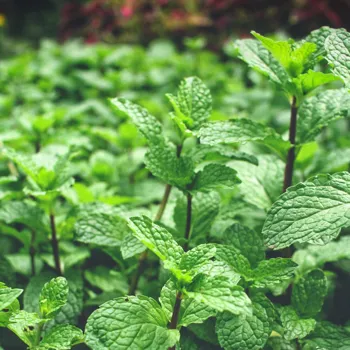
Be warned, though – mint is a vigorous grower and can quickly spread and take over your garden if you’re not careful. So, it’s best to confine it to a pot. To grow mint, simply take a cutting from an existing plant and plant it in moist soil. It prefers partial shade and regular watering.
You can harvest mint leaves regularly, and the more you harvest, the bushier the plant will become. Don't wait for the leaves to become discolored, harvest while they are still green.
Apart from its culinary uses, mint also has medicinal properties.
It's known to aid digestion, relieve headaches, and freshen breath. You can even dry the leaves and use them to make a soothing herbal tea. Growing your own mint will ensure that you always have a fresh supply of this versatile herb on hand.
Think of all the refreshing drinks and chutneys you can create! Plus, the aroma of mint is incredibly uplifting and can instantly brighten up your day. The leaves are quite effective in fighting cold and cough.
So, next time you have a sore throat, just boil some water with a handful of mint leaves and inhale the steam. It will provide instant relief. Mint is a must-have in every Indian household, and growing your own is the best way to enjoy its many benefits.
Curry Leaves/Kadi Patta (Murraya koenigii): The South Indian Staple
No South Indian kitchen is complete without kadi patta, or curry leaves. These fragrant leaves add a distinctive flavor to dishes like sambar, rasam, and kadhi. Although it takes time to grow, it is worth the wait. Curry leaves can be grown from seeds or cuttings.
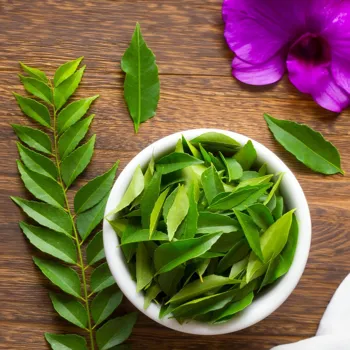
If you're starting from seeds, soak them overnight before planting them in well-drained soil. The plant prefers full sun and regular watering. One of the biggest challenges in growing curry leaves is protecting them from pests.
Keep an eye out for aphids and scale insects, and take action immediately with the help of organic pesticides. Regular pruning is also essential to encourage growth and maintain the shape of the plant. This small tree can be placed in your porch, away from direct sunlight.
Once your curry leaf plant starts producing leaves, you can harvest them as needed. Just pluck off a few sprigs and add them to your cooking. Remember to use fresh curry leaves for the best flavor. Dried curry leaves lose much of their aroma and taste.
Curry leaves are not just used for cooking; they also have medicinal properties, and are known to promote hair growth. Many people use curry leaf oil to massage their scalp in order to prevent hair fall.
Apart from its culinary uses, curry leaves are also known for their medicinal properties, and promote hair growth. It can also help regulate blood sugar levels. Growing your own curry leaves is a rewarding experience that will add an authentic touch to your South Indian dishes.
Holy Basil/Tulsi (Ocimum tenuiflorum): The Sacred Healer
Tulsi, or holy basil, is revered in India for its medicinal and spiritual properties. It's often grown in courtyards and temples and is considered a sacred plant. Tulsi is relatively easy to grow and prefers well-drained soil and plenty of sunlight. It can be grown from seeds or cuttings.
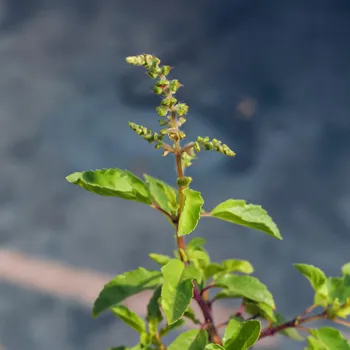
Water the plant regularly, but avoid overwatering, as this can lead to root rot. Tulsi has a strong, aromatic flavor that adds a unique touch to teas, herbal remedies, and even some savory dishes, for example tulsi chai is known to cure cold and cough.
But tulsi is not just about flavour; it’s about health.
Tulsi is known for its many health benefits, including boosting immunity, reducing stress, and fighting infections. You can chew on the leaves directly, or boil them in water to make a soothing tea.
Tulsi is also believed to have air-purifying properties, making it a great plant to have indoors. Growing your own tulsi is a way to connect with nature and enjoy the many benefits of this sacred herb. The scent of tulsi in your garden will create a calming and peaceful atmosphere.
Make sure that you harvest tulsi leaves during the winter months. Once the winter is over, tulsi plants will turn brown and dry. So, store away a few leaves, or plant new saplings.
Lemongrass (Cymbopogon citratus): The Zesty Addition
Lemongrass is a fragrant herb with a distinct citrusy flavor that is widely used in Southeast Asian and Indian cuisine. It's a great addition to soups, stews, teas, and marinades. Lemongrass is relatively easy to grow, but it needs full sun and well-drained soil.
You can grow lemongrass from seeds or cuttings. Simply place a stalk of lemongrass in a glass of water until it develops roots, then plant it in a pot or directly in the ground. Water regularly and fertilize occasionally with organic fertilizer. It needs warmth and humidity to thrive.
Lemongrass has a strong, citrusy aroma that can also help to repel mosquitoes and other insects. You can crush the leaves and rub them on your skin to act as a natural insect repellent. Apart from cooking, lemongrass is often used for its medicinal properties.
It’s thought to help with digestive issues, reduce inflammation, and boost immunity. Lemongrass tea is a refreshing and healthy beverage that can be enjoyed any time of day. You can also add lemongrass to bathwater for a relaxing and aromatic experience.
Growing your own lemongrass provides a constant supply of this fragrant and versatile herb for your culinary and medicinal needs.
Fenugreek/Methi (Trigonella foenum-graecum): The Bitter Delight
Methi, or fenugreek, is commonly used in Indian cuisine. Both the leaves and seeds of methi are used in cooking, and are known for their distinct, slightly bitter taste. Methi is easy to grow, and it can be grown in pots or directly in the ground.
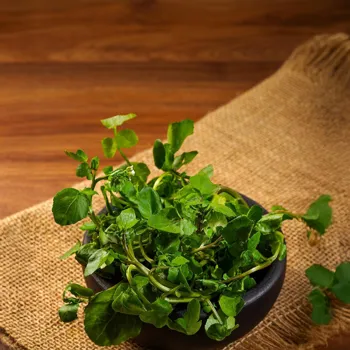
Soak the seeds overnight before sowing them in well-drained soil. Keep the soil moist, and you’ll see the seedlings sprout in a few days. The methi plant prefers full sun and regular watering. Regular harvesting will encourage more growth.
Methi leaves are commonly used in sabzis, dals, and parathas.
The seeds are used as a spice, and they are roasted and ground before being added to dishes.
Methi seeds are also used in traditional medicine to help control blood sugar levels, improve digestion, and boost milk production in breastfeeding mothers. It provides a unique flavor and subtle bitterness to dishes.
Growing your own methi will ensure that you always have a fresh supply of this nutritious herb on hand. It is also useful to cure dandruff and helps in getting rid of hair fall. Methi can be made into a paste and applied to face for removing blackheads.
When soaked overnight, and consumed in the morning on an empty stomach, it helps in reducing weight.
AI Generated Content. Glance/InMobi shall have no liability for the content



